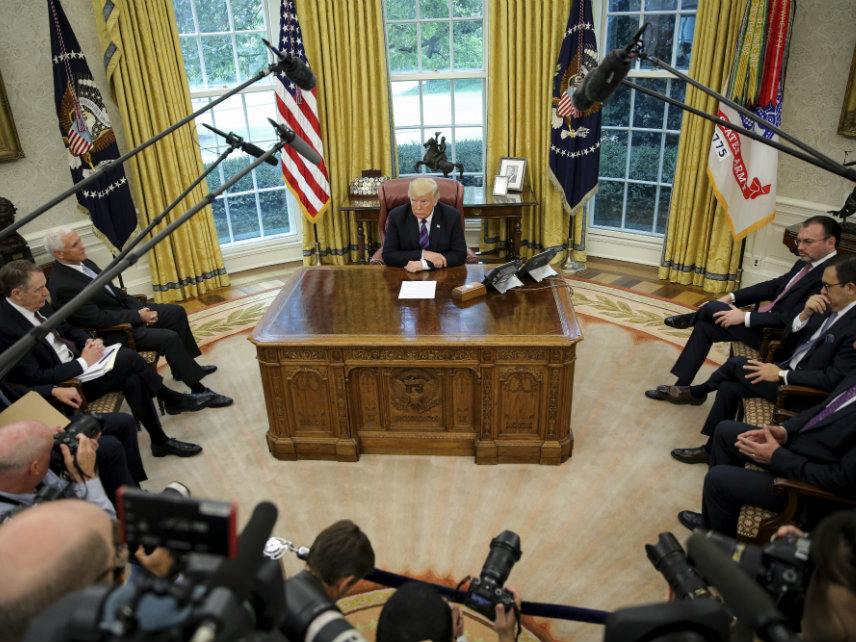A ‘misclassification error’ made the May unemployment rate look better than it is. Here’s what happened.

When the U.S. government’s official jobs report for May came out on Friday, it included a note at the bottom saying there had been a major “error” indicating that the unemployment rate likely should be higher than the widely reported 13.3 percent rate.
The special note said that if this “misclassification error” had not occurred, the “overall unemployment rate would have been about 3 percentage points higher than reported,” meaning the unemployment rate would be about 16.3 percent for May. But that would still be an improvement from an unemployment rate of about 19.7 percent for April, applying the same standards.
The Bureau of Labor Statistics, the agency that puts out the monthly jobs reports, said it was working to fix the problem.
“BLS and the Census Bureau are investigating why this misclassification error continues to occur and are taking additional steps to address the issue,” said a note at the bottom of the Bureau of Labor Statistics report.
The next big problem for the economy: Businesses can’t pay their rent
Some took this as a sign that President Trump or one of his staffers may have tinkered with the data to make it look better, especially since most forecasters predicted the unemployment rate would be close to 20 percent in May, up from 14.7 percent in April. But economists and former BLS leaders from across the political spectrum strongly dismissed that idea.
“You can 100% discount the possibility that Trump got to the BLS. Not 98% discount, not 99.9% discount, but 100% discount,” tweeted Jason Furman, the former top economist for former president Barack Obama. “BLS has 2,400 career staff of enormous integrity and one political appointee with no scope to change this number.”
Economists say the BLS was trying to be as transparent as possible about how hard it is to collect real-time data during a pandemic. The BLS admitted that some people who should have been classified as “temporarily unemployed” during the shutdown were instead misclassified as employed but “absent” from work for “other reasons.”
The black-white economic divide is as wide as it was in 1968
The “other reason” category is normally used for people on vacation, serving jury duty or taking leave to care for a child or relative. These are typically situations where the worker decides to take leave. But in this unusual pandemic circumstance, the “other reason” category was applied to some people staying at home and waiting to be called back.
This problem started in March when there was a big jump in people claiming they were temporarily “absent” from work for “other reasons.” The BLS noticed this and flagged it right away. In March, the BLS said the unemployment rate likely should have been 5.4 percent, instead of the official 4.4 percent rate. In April, the BLS said the real unemployment rate was likely about 19.7 percent, not 14.7 percent.
Economists said the big takeaway is that it’s hard to collect real-time data during a pandemic and that while the unemployment rate remains high — likely more than 16 percent — it has declined a little from April.
Trump clings to jobs numbers as a campaign life raft — and as a race-relations plan
The unemployment rate comes from a survey where Census workers ask about 60,000 households questions about whether they are working or looking for a job the week of May 10 to 16.
One of the first questions that gets asked is did the person do any work “for pay or profit?” There are then 45 pages of follow up questions that come after that. One of those questions asks if someone was “temporarily absent” from the job and why that absence occurred. One of the responses is “other.”
The BLS instructed surveyors to try to figure out if someone was absent because of the pandemic and, if so, to classify them as on “temporary layoff,” meaning they would count in the unemployment data. But some people continued to insist they were just “absent” from work during the pandemic, and the BLS has a policy of not changing people’s answers once they are recorded. It’s how the BLS protects again bias or data manipulation.
Former staffers said it’s unusual that the BLS was not able to correct this problem faster.
The U.S. economic slide is likely bottoming out, but a recovery could take years
“It’s surprising the BLS couldn’t come up with fixes to make this work in May,” said Erica Groshen, the former BLS commissioner under Obama. But, she adds, “This is a very unusual situation. There are lots of field staff who had a tried and true way of asking questions and they were doing what they were used to doing.”
The only political appointee at the BLS is the commissioner, who, Groshen said, does not have access to the data and only sees the finalized report.
“The commissioner never sees the job report before it is final. As commissioner, I did not have access to the underlying data,” Groshen said. “This is a highly automated process.”
Instead of focusing on possible Trump interference, many economists wish people would focus on the fact that 21 million Americans are currently unemployed and over 2 million have permanently lost their jobs.
The situation remains dire, they say, even after a few jobs returned in May as the economy reopened.




